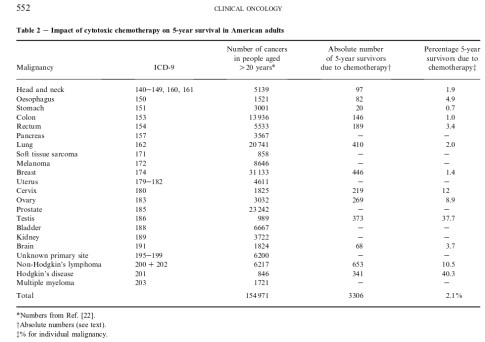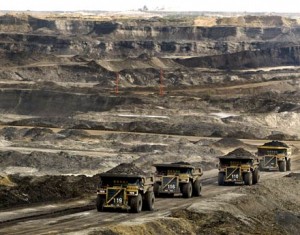You’ll find a lot more additional info on chemotherapy down below.
Learn what highly toxic, cancer causing chemical is actually used to treat cancer.
(Click on image to enlarge.)
A groundbreaking 14-year study was published in the Journal of Clinical Oncology called “The Contribution of Cytotoxic Chemotherapy to 5-year Survival in Adult Malignancies”.
Read the full study published in the Journal of Clinical Oncology (Dec. 2004) here (and take a look at those tables at page 3 & 4):
“The Contribution of Cytotoxic Chemotherapy to 5-year Survival in Adult Malignancies” (PDF)
Studied were the 5-year survival rates of chemotherapy on 22 types of cancers in the US and Australia.
154,971 Americans & Australians cancer patients, age 20 and older, were treated with chemotherapy.
The survival of only 3,306 could be ‘credited’ to chemo.
A short info from WebMD:
– The contribution of cytotoxic chemotherapy to 5-year survival in adult malignancies:
Study Results: “The overall contribution of curative and adjuvant cytotoxic chemotherapy to 5-year survival in adults was estimated to be 2.3% in Australia and 2.1 % in The USA”
Study Conclusion:“As the 5-year survival rate in Australia is now over 60%, it is clear that cytotoxic chemotherapy only makes a minor contribution to cancer survival.To justify the continued funding and availability of drugs used in cytotoxic chemotherapy, a rigorous evaluation of the cost-effectiveness and impact on quality of life is urgently required.”
Chemotherapy contributed on average only 2,1% to the overall survival rate!

